
1
6.1
Lecture
Data Encryption Standard (DES)
6.2
Objectives
❏
❏❏
❏To review a short history of DES
❏
❏❏
❏To define the basic structure of DES
❏
❏❏
❏To describe the details of building elements of DES
❏
❏❏
❏To describe the round keys generation process
❏
❏❏
❏To analyze DES
Chapter 6
6.3
66--1 INTRODUCTION1 INTRODUCTION
TheThe DataData EncryptionEncryption StandardStandard (DES)(DES) isis aa symmetricsymmetric--keykey
blockblock ciphercipher publishedpublished byby thethe NationalNational InstituteInstitute ofof
StandardsStandards andand TechnologyTechnology (NIST)(NIST)..
6.1.1 History
6.1.2 Overview
Topics discussed in this section:Topics discussed in this section:
6.4
In 1973, NIST published a request for proposals for a national
symmetric-key cryptosystem. A proposal from IBM, a
modification of a project called Lucifer, was accepted as DES.
DES was published in the Federal Register in March 1975 as
a draft of the Federal Information Processing Standard
(FIPS).
6.1.1 History
! " #
$ % $ & '()
'*+$ $ , - ./+$ ,
*0 ! $% #
# 1 2 $ 3 0 $ %
0 - % $ % 43
"5 .((5
% " -) % " % 5
6.5 6.6
DES is a block cipher, as shown in Figure 6.1.
6.1.2 Overview
Figure 6.1 Encryption and decryption with DES

2
6
$
& 7 8 "
% 8
4 9
%
% % $
%
6.7 6.8
66--2 DES STRUCTURE2 DES STRUCTURE
TheThe encryptionencryption processprocess isis mademade ofof twotwo permutationspermutations (P(P--
boxes),boxes), whichwhich wewe callcall initialinitial andand finalfinal permutations,permutations, andand
sixteensixteen FeistelFeistel roundsrounds..
6.2.1 Initial and Final Permutations
6.2.2 Rounds
6.2.3 Cipher and Reverse Cipher
6.2.4 Examples
Topics discussed in this section:Topics discussed in this section:
6.9
66--2 Continue2 Continue
Figure 6.2 General structure of DES
:""-
6.10
6.11
6.2.1 Initial and Final Permutations
Figure 6.3 Initial and final permutation steps in DES
6.12
6.2.1 Continue
Table 6.1 Initial and final permutation tables

3
6.13
Example 6.1
6.2.1 Continued
FindFind thethe outputoutput ofof thethe initialinitial permutationpermutation boxbox whenwhen thethe inputinput isis
givengiven inin hexadecimalhexadecimal asas::
OnlyOnly bitbit 2525 andand bitbit 6464 areare 11ss;; thethe otherother bitsbits areare 00ss.. InIn thethe finalfinal
permutation,permutation, bitbit 2525 becomesbecomes bitbit 6464 andand bitbit 6363 becomesbecomes bitbit 1515.. TheThe
resultresult isis
SolutionSolution
6.14
Example 6.2
6.2.1 Continued
ProveProve thatthat thethe initialinitial andand finalfinal permutationspermutations areare thethe inverseinverse ofof eacheach
otherother byby findingfinding thethe outputoutput ofof thethe finalfinal permutationpermutation ifif thethe inputinput isis
TheThe inputinput hashas onlyonly twotwo 11ss;; thethe outputoutput mustmust alsoalso havehave onlyonly twotwo 11ss..
UsingUsing TableTable 66..11,, wewe cancan findfind thethe outputoutput relatedrelated toto thesethese twotwo bitsbits..
BitBit 1515 inin thethe inputinput becomesbecomes bitbit 6363 inin thethe outputoutput.. BitBit 6464 inin thethe inputinput
becomesbecomes bitbit 2525 inin thethe outputoutput.. SoSo thethe outputoutput hashas onlyonly twotwo 11s,s, bitbit 2525
andand bitbit 6363.. TheThe resultresult inin hexadecimalhexadecimal isis
SolutionSolution
6.15
6.2.1 Continued
The initial and final permutations are straight P-
boxes that are inverses
of each other.
They have no cryptography significance in DES.
Note
6.16
DES uses 16 rounds. Each round of DES is a Feistel cipher.
6.2.2 Rounds
Figure 6.4
A round in DES
(encryption site)
6.17
The heart of DES is the DES function. The DES function
applies a 48-bit key to the rightmost 32 bits to produce a 32-bit
output.
6.2.2 Continued
DES Function
Figure 6.5
DES function
6.18
Expansion P-box
Since RI−1 is a 32-bit input and KIis a 48-bit key, we first need
to expand RI−1 to 48 bits.
6.2.2 Continue
Figure 6.6 Expansion permutation

4
6.19
Although the relationship between the input and output can be
defined mathematically, DES uses Table 6.2 to define this P-
box.
6.2.2 Continue
Table 6.6 Expansion P-box table
6.20
Whitener (XOR)
After the expansion permutation, DES uses the XOR operation
on the expanded right section and the round key. Note that
both the right section and the key are 48-bits in length. Also
note that the round key is used only in this operation.
6.2.2 Continue
6.21
S-Boxes
The S-boxes do the real mixing (confusion). DES uses 8 S-
boxes, each with a 6-bit input and a 4-bit output. See Figure
6.7.
6.2.2 Continue
Figure 6.7 S-boxes
6.22
6.2.2 Continue
Figure 6.8 S-box rule
6.23
Table 6.3 shows the permutation for S-box 1. For the rest of
the boxes see the textbook.
6.2.2 Continue
Table 6.3 S-box 1
6.24
Example 6.3
6.2.2 Continued
TheThe inputinput toto SS--boxbox 11 isis 110001000111.. WhatWhat isis thethe output?output?
IfIf wewe writewrite thethe firstfirst andand thethe sixthsixth bitsbits together,together, wewe getget 1111 inin binary,binary,
whichwhich isis 33 inin decimaldecimal.. TheThe remainingremaining bitsbits areare 00010001 inin binary,binary, whichwhich
isis 11 inin decimaldecimal.. WeWe looklook forfor thethe valuevalue inin rowrow 33,, columncolumn 11,, inin TableTable
66..33 (S(S--boxbox 11)).. TheThe resultresult isis 1212 inin decimal,decimal, whichwhich inin binarybinary isis 11001100..
SoSo thethe inputinput 100011100011 yieldsyields thethe outputoutput 11001100..
SolutionSolution

5
6.25
Example 6.4
6.2.2 Continued
TheThe inputinput toto SS--boxbox 88 isis 000000000000.. WhatWhat isis thethe output?output?
IfIf wewe writewrite thethe firstfirst andand thethe sixthsixth bitsbits together,together, wewe getget 0000 inin binary,binary,
whichwhich isis 00 inin decimaldecimal.. TheThe remainingremaining bitsbits areare 00000000 inin binary,binary, whichwhich
isis 00 inin decimaldecimal.. WeWe looklook forfor thethe valuevalue inin rowrow 00,, columncolumn 00,, inin TableTable
66..1010 (S(S--boxbox 88)).. TheThe resultresult isis 1313 inin decimal,decimal, whichwhich isis 11011101 inin binarybinary..
SoSo thethe inputinput 000000000000 yieldsyields thethe outputoutput 11011101..
SolutionSolution
6.26
Straight Permutation
6.2.2 Continue
Table 6.11 Straight permutation table
6.27
Using mixers and swappers, we can create the cipher and
reverse cipher, each having 16 rounds.
6.2.3 Cipher and Reverse Cipher
First Approach
To achieve this goal, one approach is to make the last round
(round 16) different from the others; it has only a mixer and
no swapper.
In the first approach, there is no swapper in the
last round.
Note
6.28
6.2.3 Continued
Figure 6.9 DES cipher and reverse cipher for the first approach
6.29
6.2.3 Continued
Algorithm 6.1 Pseudocode for DES cipher
6.30
6.2.3 Continued
Algorithm 6.1 Pseudocode for DES cipher (Continued)

![Bài giảng Mật mã và ứng dụng: An toàn Hệ điều hành - Trần Đức Khánh [Full]](https://cdn.tailieu.vn/images/document/thumbnail/2015/20151127/doinhugiobay_04/135x160/4761448615812.jpg)

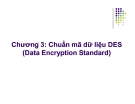
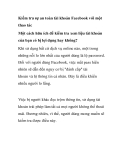

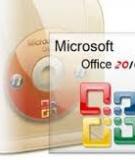
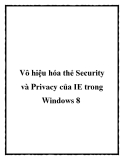
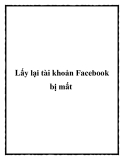








![Sổ tay Kỹ năng nhận diện & phòng chống lừa đảo trực tuyến [Mới nhất]](https://cdn.tailieu.vn/images/document/thumbnail/2025/20251017/kimphuong1001/135x160/8271760665726.jpg)
![Cẩm nang An toàn trực tuyến [Mới nhất]](https://cdn.tailieu.vn/images/document/thumbnail/2025/20251017/kimphuong1001/135x160/8031760666413.jpg)







